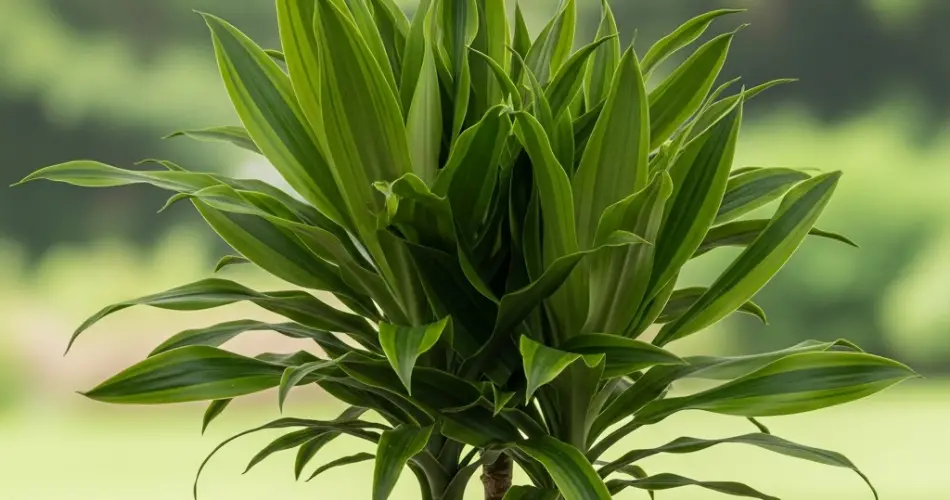Dracaena is one of the most popular indoor plants thanks to its striking foliage, easy care routine, and ability to thrive in various indoor conditions. With its tall stems and sword-like leaves, it brings a touch of elegance to any room. The good news for apartment dwellers and those with limited space is that Dracaena grows remarkably well in small pots. When properly maintained, these plants can adapt to confined spaces while still offering maximum visual impact.
If you’re considering incorporating Dracaena into your indoor gardening setup, here’s how to make the most of small pots without compromising the plant’s health or aesthetic value.
Why Dracaena Works Well in Small Pots
Dracaena varieties such as Dracaena marginata, Dracaena fragrans, and Dracaena compacta have relatively slow-growing root systems, making them ideal candidates for small containers. Their upright growth habit also means they don’t sprawl out, saving floor space and fitting well on shelves, side tables, or narrow corners.
Because of their adaptability, Dracaenas are a favorite for minimalist or compact living spaces like condos, small apartments, or offices. They continue to grow vertically without taking up much horizontal space, allowing you to green your space without crowding it.
Choosing the Right Pot Size
When potting Dracaena in small containers, it’s important to strike a balance between limiting size and ensuring enough root space. Choose a pot that is only 1–2 inches wider in diameter than the plant’s current root ball. A pot that’s too large can lead to water retention, which increases the risk of root rot.
Ensure that your container has good drainage holes. Dracaena dislikes soggy roots, and drainage is crucial to prevent overwatering. If your decorative pot lacks holes, use it as a cover pot and place a plastic nursery pot with holes inside.
Pot Material and Shape Considerations
Since you’re working with limited space, opt for lightweight materials such as plastic or fiberstone. These are easier to move around when you’re cleaning or adjusting your plant’s location for better light. For added style, choose pots in neutral or earth-toned colors that match your interior while allowing the deep green or striped foliage of Dracaena to stand out.
Tall, narrow pots work particularly well for Dracaena since they mimic the plant’s upright growth habit and provide a clean, vertical visual flow. Additionally, square pots can help you maximize shelf or floor space by fitting snugly into corners or lined along walls.
Light Requirements in Small Spaces
Even in small rooms, Dracaena thrives in indirect sunlight. A spot near a bright window, but out of direct sun rays, is ideal. If your space has limited natural light, Dracaena tolerates low-light conditions better than many other houseplants. However, growth may slow down slightly, and variegated varieties may lose some color intensity.
For dim areas, consider using LED grow lights to supplement natural light. Place the plant under grow lights for 10–12 hours a day to maintain healthy growth in compact spaces with poor sunlight.
Watering Practices in Small Containers
Watering needs differ when using smaller pots. Since there’s less soil, the pot dries out faster, especially in warmer rooms. However, because Dracaena is sensitive to overwatering, always check the top inch of the soil before adding water. If it’s dry, it’s time to water. If not, wait a few days.
Using pots with good drainage and well-aerated soil (a mix of potting soil with perlite or pumice) ensures that excess water can escape and roots remain healthy. Avoid letting water collect at the bottom of a cachepot or saucer.
Fertilizing and Maintenance
In a smaller pot, nutrients can be depleted quickly. Use a balanced liquid houseplant fertilizer diluted to half-strength once every month during the growing season (spring and summer). Reduce or stop fertilizing in the fall and winter.
Regularly wipe the leaves with a damp cloth to remove dust buildup, which helps the plant photosynthesize better. Trimming off yellow or damaged leaves also helps maintain the plant’s appearance.
If your Dracaena becomes too tall for its pot, you can prune the stem back. It will develop new shoots from below the cut, allowing you to control the height and create a bushier appearance.
Repotting and Long-Term Growth
Dracaena can stay in the same pot for years, especially when space is a concern. Repotting is only necessary every 2–3 years or when the roots begin circling the base of the pot. When that happens, upgrade to a slightly larger pot—again, only an inch or two wider.
Alternatively, you can trim the roots and refresh the soil to keep the plant in the same container. This is a useful trick if you want to maintain the same decorative pot without sacrificing plant health.
Final Thoughts
Growing Dracaena in small pots is an excellent way to enjoy greenery in tight indoor spaces. With the right pot, proper drainage, and a little care, your Dracaena can flourish as a vertical focal point on a shelf, desk, or cozy corner. Its minimal footprint, combined with bold, sculptural leaves, makes it a perfect plant for modern and compact lifestyles. Whether you’re decorating a small apartment or adding style to a tiny office, Dracaena offers an easy-care, space-efficient solution for indoor plant lovers.



